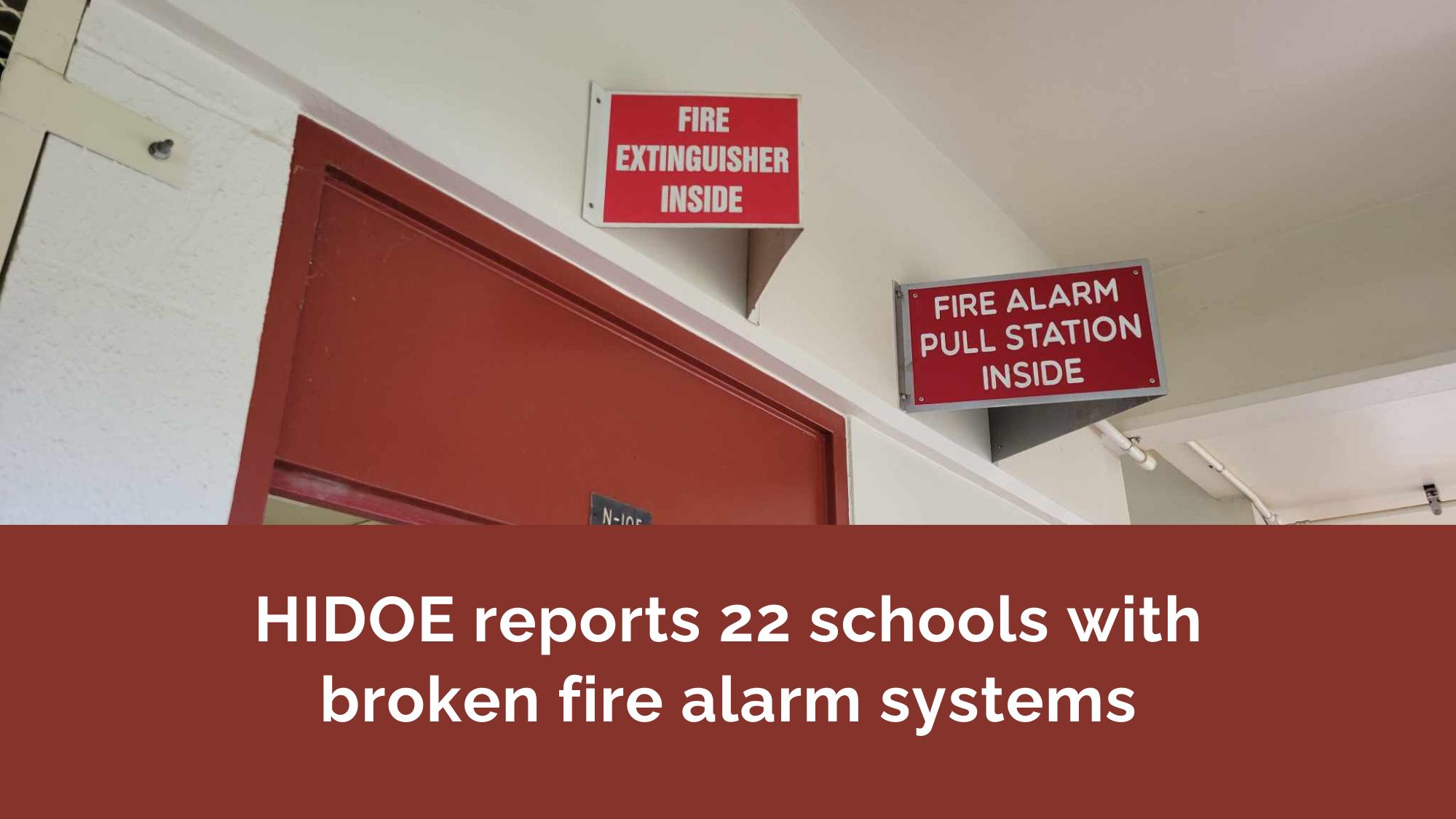The number of inoperable systems has doubled since a previous report in January
Posted: April 11, 2024
A review by the Hawaiʻi State Department of Education found that the number of public schools without working fire alarm systems more than doubled from 11 the department reported in January to 22 this month. Many of those broken systems won’t be fixed for months or even a year or more, the HIDOE said.
Some examples:
- The 39-year-old fire alarm system at Kainalu Elementary in Kailua on Oʻahu is completely inoperable, the HIDOE said, and the department estimates a control panel won’t be replaced until Aug. 1, 2025.
- The fire alarm system at Sunset Beach Elementary on Oʻahu’s North Shore is also not working campus-wide, and the 33-year-old system is scheduled to be replaced in January of 2025.
- Kahuku High and Intermediate’s 19-year-old fire alarm system is also inoperable across the campus and is not slated to be replaced until March of 2025.
As of April 1, the HIDOE reported its first inventory of fire alarm systems at all 258 schools statewide which found:
- Twenty-two schools have inoperable fire alarm systems and have resorted to implementing a manual fire watch plan.
- Sixty-eight schools are equipped with operable fire alarm systems that are more than 20 years old, and no replacement parts are available.
- Seventy-one schools maintain operable fire alarm systems that are either 20 years old or with unavailable replacement parts.
- One hundred and two schools are equipped with operable fire alarm systems, with ages not exceeding 20 years and readily available replacement parts.
Hawaiʻi State Teachers Association President Osa Tui, Jr. said, “The HSTA continues to be concerned about fire alarms not working in our schools. We are glad the department is taking fire alarm safety seriously now, and the HIDOE appears to be attacking the alarm repair backlog.
“We have seen how much of a struggle it will be to replace the King Kamehameha III Elementary campus on Maui. We don’t want another school destroyed by fire. Putting in the effort now could save us a lot of heartache later,” Tui added.
HIDOE completes fire alarm inventory, deploys stop-gap technology to help with fire drills
“The department has made significant progress” on the fire alarm issue, since the Hawaiʻi Board of Education, the HSTA, and others raised concerns about broken fire alarm systems five months ago, said Curt Otaguro, HIDOE’s deputy superintendent in charge of facilities.
First off, it has completed a fire alarm inventory, he noted.
“You would like to think that we know that (a fire alarm inventory). We had some of that information, but thanks to the board’s focus on this, we were able to complete that,” Otaguro told BOE members Thursday.
“This (fire alarm problem) is not just a piece of equipment that you put in a work order to fix. This is a programmatic, systematic effort that we need to establish procedures, checks and balances as well as the fiscal aspect of putting in budgets to the legislature. So yes, there is a long-term plan that is being formulated,” Otaguro added.
Otaguro said a pilot program at Kapalama Elementary had a “successful fire drill” on March 28, in which staff members used wearable devices to trigger a fire alarm, notifying key staff of the alarm and sending alerts to phones and speakers in classrooms. A campus-wide alert went out within 42 seconds during that drill, Otaguro said.
He said the department has procured 125 of the wearable devices and plans to initially focus on deploying the technology at Kainalu and Konawaena Elementary schools, with others to follow.
In addition to the pilot program, Otaguro added the department is exploring wireless fire systems for quick deployment in schools that have implemented fire watch plans because their alarm systems are not fully functional.
“We’re taking this very seriously. It’s one of the few items on the top of our to-do list,” said Audrey Hidano, HIDOE’s interim assistant superintendent of facilities and operations.

